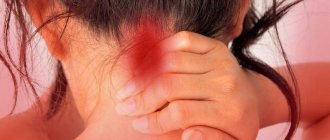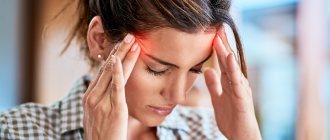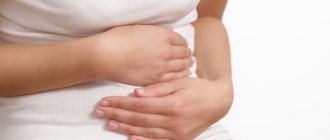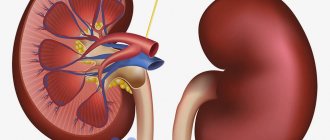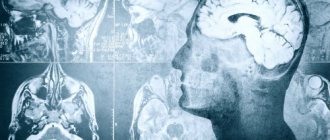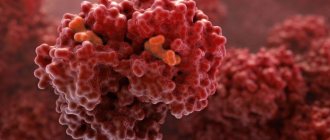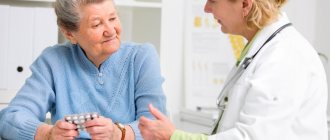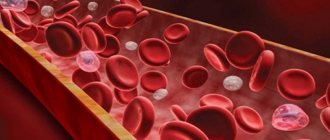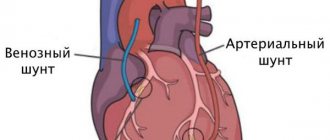Useful articles
Publication date:
Most people experience a pressing headache at least occasionally. According to medical statistics, up to 92% of the population is susceptible to it. Pain syndrome can develop spontaneously (for no apparent reason) or due to the influence of certain external factors. For a pressing headache, treatment depends on the reasons that caused it. If attacks occur frequently, this is a good reason to consult a doctor.
Types and causes of occurrence
There are 4 main types of pressing headaches:
- Liquorodynamic (character - bursting, often presses on the eyes).
- Cephalgia of muscle tension (with compression of the muscles of the cervical region).
- Vascular (pulsating pain due to increased pressure in the blood vessels of the head).
- Neuralgic (the nature of cephalgia (headache) is piercing, acute).
The reasons that provoke an attack include:
- ischemic disorders (insufficient blood flow to the brain due to vasospasm);
- hypoxia (lack of oxygen);
- irritation of nerve endings;
- general tension in the neck and head muscles;
- traumatic brain injuries and neck injuries;
- diseases of the spine;
- infections (viral and bacterial);
- acute or chronic inflammation in the paranasal sinuses;
- cardiovascular pathologies (including hypertension);
- poisoning (including intoxication with ethanol and its decomposition products).
Please note: Women are more likely to suffer from pressing headaches.
Predisposing factors are:
- poor nutrition;
- weather sensitivity;
- hormonal imbalance;
- stress and its consequences (anxiety and depression);
- physical fatigue;
- sleep disorders;
- fasting (for example, against the background of a restrictive diet);
- change of climatic zones;
- taking certain pharmacological agents (tranquilizers, analgesics, drugs with caffeine, etc.).
Diagnostic methods
To diagnose pain in the parietal region, instrumental and laboratory techniques are used that make it possible to determine the exact cause of the discomfort. A simple examination reveals inflammatory processes, neoplasms, abscesses, as well as symptoms of infectious diseases. However, to understand the full picture of the disease, the following tests may be prescribed:
- examination of smears and scrapings from the ears, skin, and mouth;
- blood tests to determine pathogens of viral diseases and pathologies of individual organs;
- consultation with an otolaryngologist - instrumental techniques will allow you to identify various diseases of the hearing organ;
- examination by a dentist - prescribed if caries, abscesses, or incorrect position of teeth during their growth are suspected;
- CT, MRI of the head - these techniques are used to diagnose brain tumors.
The Clinical Brain Institute has modern equipment that allows for accurate and high-quality analyzes. There is also the opportunity to consult with general and specialist doctors who specialize in various areas.
Symptoms
Characteristic symptoms of a pressing headache requiring treatment:
- simultaneous or alternate coverage of the frontal, occipital and temporal regions;
- feeling of pressure on the main focus;
- predominant localization on the right or left;
- spread from the neck to the back of the head and to other areas of the head;
- monotonous in nature (aching sensations usually do not tend to intensify).
Symptoms that are very pronounced and do not disappear after taking analgesics, parallel to which nausea and vomiting occur, may indicate the development of dangerous pathologies such as encephalitis, brain abscess, etc.
Pressure on the eyes often indicates increased intracranial pressure or temporomandibular joint disease;
With otitis media, pain syndrome often develops in the temporal region.
Burning and squeezing cephalalgia, accompanied by dizziness, loss of consciousness and visual impairment, is observed with osteochondrosis of the cervical spine.
Treatment of parietal headaches
Treatment tactics are selected individually, depending on the exact diagnosis. Most diseases can be treated conservatively, using tablets, injections, ointments and drops. The scheme may include the following steps:
- anti-inflammatory therapy - tablets and injections help relieve inflammation and pain;
- antibiotics - prescribed for bacterial infections, as well as to prevent its occurrence in inflammatory diseases;
- additional methods - the doctor may prescribe means for removing excess fluid, antifungal and other drugs;
- physiotherapy – a set of techniques to improve hearing in case of ear diseases;
- surgical methods are necessary for removing foreign bodies from the ear canals, treating purulent sinusitis, as well as for removing abscesses and neoplasms.
At the Clinical Brain Institute there are opportunities to undergo inpatient or outpatient treatment. The regimen will include only those drugs and procedures that will help quickly get rid of the cause of pain and symptoms of the underlying disease. At home, it is important to follow all the recommendations of doctors in order not only to relieve pain, but also to prevent further development of the disease.
Treatment
For a pressing headache, treatment primarily involves eliminating the provoking factors. It is important to give up bad habits, take walks in the fresh air more often and not neglect dosed physical activity (morning exercises, fitness, yoga, etc.). It is recommended to master the technique of self-massage to relieve muscle tension and improve blood flow to the head.
It is necessary to observe a sleep and rest schedule; To fully restore the nervous system after daytime stress, you need to sleep at least 7-8 hours.
It is advisable to periodically measure blood pressure; If your blood pressure increases frequently, you should consult a doctor.
The living room or work space should be ventilated more often.
Decoctions of medicinal plants - mint, valerian, sage, primrose and meadowsweet - will help cope with an attack.
Your doctor may prescribe the following medications for the symptomatic treatment of a pressing headache:
- Aspirin;
- Paracetamol;
- Spazmolgon;
- Nimesil;
- Ketoprofen.
You should not overuse analgesics, since frequent use of medications over time can provoke the development of “rebound” headaches.
The text was checked by expert doctors: Head of the socio-psychological service of the Alkoklinik MC, psychologist Yu.P. Baranova, L.A. Serova, a psychiatrist-narcologist.
CAN'T FIND THE ANSWER?
Consult a specialist
Or call: +7 (495) 798-30-80
Call! We work around the clock!
Pain at the base of the skull
Rheumatism
Arthritis
29093 11 February
IMPORTANT!
The information in this section cannot be used for self-diagnosis and self-treatment.
In case of pain or other exacerbation of the disease, diagnostic tests should be prescribed only by the attending physician. To make a diagnosis and properly prescribe treatment, you should contact your doctor. Pain at the base of the skull: causes of occurrence, what diseases it occurs with, diagnosis and treatment methods.
Definition
Pain at the base of the skull (vertebrogenic cervicocranialgia) is a pain syndrome localized in the cervico-occipital region, which can spread to the frontotemporal region and the eye area on the homolateral side. It has been proven that the source of pain can be the structures of the upper cervical spine. Typically, this is the level of the C1, C2 and C3 vertebrae, which includes joints, discs, ligaments and muscles. The lower cervical vertebrae, as a rule, play an indirect role in the formation of clinical symptoms of pain.
Pathological diseases of the cervical spine, which are accompanied by intense or aching pain, experts call “painful neck” syndrome.
The International Headache Society, 3rd revision (ICHD-3) recommended considering cervicogenic headache as secondary, arising due to changes in the cervical spine, including bone structures, intervertebral discs, and soft tissue structures, the pathology of which is often accompanied by pain in the cervical spine. neck. 70% of patients with pain in the cervical spine simultaneously experience headache, but only in 18% of cases is it considered a consequence of neck pain.
In the genesis of headaches in childhood and adolescence, functional disorders in the spinal motion segments of the cervical spine, in particular disorders in the structures of its upper cervical spine, play a significant role.
Types of pain at the base of the skull
Cervicogenic pain is indicated by differential features such as unilateral headache extending from the back of the head to the front, and evidence of involvement of the cervical spine. An attack of pain can be triggered by applying pressure to trigger points in the neck/occipital area or holding the neck in an awkward position. It is important that in some cases such pain has migraine-like features - a number of patients experience photo- and phonophobia, lacrimation, nausea, vomiting, which can sometimes be regarded as a manifestation of migraine.
Pain at the base of the skull is characterized by limited range of motion in the cervical spine, soreness of the neck muscles, changes in muscle tone, or a reaction to passive or active stretching. Usually the pain is combined with a functional block at the upper cervical level.
Injuries to the upper cervical spine due to tumors, fractures, infections, and rheumatoid arthritis can cause headaches that present clinically in the same way as cervicocranialgia. However, a feature of cervicogenic headache is that it is provoked by movements in the cervical spine, and after performing certain warm-up movements in the neck it can stop. Most often, such complaints are not associated with serious pathology, and the patient makes a full recovery.
Possible causes of pain at the base of the skull
Pain at the base of the skull is based on functional and organic changes in various anatomical structures of the cervical spine: joints, ligaments, fascia, muscles, nerves. The leading role is given to degenerative-dystrophic changes in the spine. However, there are only isolated indications of the role of functional disorders.
One of the main causes of neck pain is staying in a fixed position for a long time. Other causes of the disease include:
- osteochondrosis, spondyloarthrosis, spondylosis, uncovertebral arthrosis and other changes in the spine;
- neck injuries, injuries;
- sprains;
- intervertebral disc herniation;
- spondyloarthritis, rheumatoid arthritis.
A common cause of cervicogenic pain is inferior oblique muscle syndrome.
A spasmed muscle can compress the neurovascular bundle passing under it (segment of the vertebral artery with the periarterial sympathetic plexus, occipital nerves) - for this condition, the development of paresthesia in the scalp is typical, and sometimes there is pain when combing the hair. It has been observed that stimulation of the cervical structures causes pain, and anesthesia reduces it. Lately, doctors are increasingly talking about “text neck” syndrome, which develops in people who spend a lot of time reading texts from electronic devices (gadgets).
The head of an adult weighs about 5 kg - this is the weight the neck experiences in its normal position. When reading from gadget screens, the head is usually tilted: when tilted just 15°, the load on the spine increases to 12 kg, and when tilted 60° – up to 27 kg. As a result, posture changes, the intervertebral discs of the cervical spine suffer, muscles spasm, and pain occurs at the base of the skull.
The main manifestations of pain at the base of the skull include:
- frequent contraction of the neck muscles, convulsions;
- painful sensations when turning the head;
- noise in the head, sleep disturbance;
- pain in the cervical spine, radiating to the head;
- dizziness;
- constant tension in the neck and back of the head.
The presence of three to four signs should make the patient think about seeking medical help.
Which doctors should you contact if you experience pain at the base of the skull?
To determine the cause of the headache, you should contact a general practitioner or. The doctor will prescribe the necessary examination, determine the cause of the disease and prescribe treatment.
Diagnosis and examinations for pain at the base of the skull
The following diagnostic criteria are used to make a diagnosis:
- The causal relationship of headache with pathology of the cervical region is based on at least one of the following signs:
- clinical signs confirm that the source of pain is located in the neck;
- pain stops after diagnostic blockade of neck structures or nerve formations (with an adequate comparative study with placebo).
Using clinical, laboratory and/or neuroimaging methods, signs of disorder or damage in the cervical spine or soft tissues of the neck that are a reliable or possible cause of headache are determined:
- X-ray of the cervical region in several projections;
Methods for treating heaviness in the head
As already mentioned, heaviness in the head in itself is not a disease. This is only a symptom, and it is the root cause of this condition that needs to be treated.
Treatment of the underlying disease is specific, selected taking into account the individual characteristics of the patient’s body and entirely depends on the identified disorders.
However, symptomatic treatment of heaviness in the head and similar accompanying symptoms is also possible. Most often, non-steroidal anti-inflammatory drugs, analgesics, antispasmodics and other drugs are used in therapy to relieve discomfort. In some cases, they resort to blockades.
However, do not forget that long-term drug treatment is addictive, and the drugs lose their effectiveness over time. So this approach to treatment can be truly justified only in a situation where heaviness in the head is caused by serious organic lesions. In other cases, it is recommended to solve the problem, if possible, through safer therapeutic methods without the use of “chemistry”.
Thus, heaviness in the head can be easily eliminated with the help of self-massage of the biologically active zones of the back of the neck, the back of the head, the temporal region, and the crown. Impact on these areas not only relieves tension from the neck muscles, but also stimulates the flow of fresh blood, which helps improve well-being and restore performance.
In addition, you should pay attention to a number of treatment methods that have proven effective in improving blood flow in the cervical spine and normalizing blood supply to the brain. First of all, these include manual therapy and all kinds of physiotherapeutic procedures.
Physical therapy exercises can also give good results in the fight against heaviness in the head, drowsiness, fatigue and other associated symptoms. Physical activity helps saturate the blood and tissues with oxygen. In addition, regular performance of even simple exercises allows you to strengthen the muscle corset and, accordingly, reduce the load on the spinal column itself and protect it from the development of destructive processes.
When is it necessary to see a specialist?
In some cases, headaches in the forehead, temples, crown or back of the head appear extremely rarely, go away on their own and do not require any treatment. However, you should know when this symptom needs timely diagnosis. Competent consultation with a specialist is required if you have the following headache symptoms:
- very headache, may be accompanied by nausea, photophobia, increased hearing sensitivity, numbness of a part of the body or face, deterioration of visual activity, increased body temperature, dizziness;
- not too pronounced, but the back of the head or other areas of the head often hurt, which requires taking medications to relieve discomfort;
- headache on the right, left or from the back of the head only (unilaterally);
- headache that appeared for the first time at a late age (after 50 years).
How to cure a headache with one injection?
The Center for the Study of Pain of JSC "Medicine" (clinic of Academician Roitberg) uses targeted (targeted) treatment of migraines with the monoclonal antibody drug "Irinex", which is administered subcutaneously by injection. This method has already helped thousands of patients in the USA and Europe, and has now become available in Russia.
Specialists at the Pain Research Center approach migraine treatment in a comprehensive manner. This approach allows us to minimize the impact of the disease on the body and overall health. The combination of various methods of rehabilitation and therapy allows you to achieve excellent results in a short time and a significant improvement in the quality of life.
How are the causes of heaviness in the head diagnosed?
As you can see, the number of diseases that can cause heaviness in the head and its accompanying manifestations is quite large and many of them are very serious. However, you should not give in to panic when the slightest discomfort appears in your head. It is much more advisable to consult a doctor who can competently assess all existing symptoms and prescribe the necessary diagnostic measures.
The examination should begin with a visit to a neurologist, but subsequently consultations with a cardiologist, ophthalmologist and otolaryngologist may also be necessary.
To determine the causes of heaviness in the head, dizziness, weakness and other similar symptoms, encephalography, magnetic resonance imaging, and computed tomography are prescribed. An electrocardiographic examination, Doppler ultrasound of the vessels of the head and neck, and an audiographic examination are often also required.
Timely diagnosis of complaints of unpleasant sensations in the head is of paramount importance. The correct approach to treatment and its success largely depend on its quality and usefulness.
Harmful daily habits for humans
At times, the answer to the question of why the back of the head and neck hurts is the incorrect location of the workspace relative to the eyes. If pain appears at the end of a work shift, this is a direct signal that work is the source of the problem. People do not pay attention to their posture, they lower their heads down, without looking up from, for example, paperwork for several hours.
To avoid heaviness in the back of the head and neck, it is necessary to place the monitor in front of the eyes. It is important to take breaks, warm up as often as your work allows, and do basic head tilts to relax your muscles.
To forget how much your neck and back of your head hurt, it is important to say goodbye to many daily bad habits. For example, many people hold a telephone receiver between their neck and shoulder. Some people are used to sleeping in a chair with their head thrown back and their chin down. Women in the modern rhythm of life are accustomed to doing everything as quickly as possible, but without caring about their health. For example, washing your hair in the sink, or leaning under the tap in the bathroom. This can become a source of pain in the neck and back of the head.
Even waking up, during which the back of your head and neck hurts and you feel dizzy, can be an alarming signal. The culprits of unpleasant sensations are the pillow and mattress. In order to prevent serious illnesses, it is worth changing the mattress to a firm one, and the pillow to one of such a height that the head is at the same level as the spine.
It is obvious that many daily habits can cause significant harm to the body. Changing habits can be easy, which will ultimately lead to healthy functioning of the body.
With tips on actions to relieve heaviness in the neck and back of the head, everyone can put their body in order. Of course, all the methods presented are not a panacea, but an excellent help in solving the problem that has arisen. Doctors should not be neglected: they will be able to tell exactly why the neck and back of the head hurt. It is important to follow these recommendations in combination, because only well-designed therapy will help you say goodbye to the disease that causes discomfort.
Causes
The list of the most common causes of headaches includes:
- sudden changes in hormonal levels (puberty, pregnancy, menopause, certain phases of the menstrual cycle);
- severe or prolonged stress;
- overwork, lack of sleep;
- vegetative-vascular dystonia (impaired functioning of the autonomic nervous system);
- high or low blood pressure;
- inflammatory processes in the brain and its membranes, sinuses, upper respiratory tract, muscles of the head and neck, and oral cavity;
- pathology of the thyroid gland;
- ophthalmological diseases, in particular glaucoma;
- head or spine injuries;
- increased or decreased blood glucose levels;
- infectious diseases;
- pathology of the cervical spine: osteochondrosis, protrusion or herniation of intervertebral discs;
- benign and malignant tumors, etc.
Depending on the cause, headaches are classified as:
- primary: does not have a clearly identified mechanism of occurrence (migraine, cluster headaches or tension pain);
- secondary: is a consequence of disease or injury.
general information
Currently, doctors identify more than 200 causes of headaches in adults. Pain in itself is not a disease, it is only a symptom of a particular pathology. Diseases of the cardiovascular and central nervous systems, spinal osteochondrosis and inflammation of the sinuses, ophthalmological problems and chronic intoxication - all this can cause discomfort.
Only a full examination, including a thorough examination, consultations with specialists, laboratory, functional and instrumental diagnostics can accurately determine the cause of a severe headache and select the correct therapy. In this case, the medications will not only block the discomfort, but also eliminate its source.
Treatment at the Energy of Health clinic
Even a mild headache can affect lifestyle and be a symptom of serious illnesses. Doctors at the Energy of Health clinic invite you to undergo a comprehensive examination and identify the cause of the discomfort. We offer modern, combined treatment methods, including:
- drug therapy according to indications;
- various types of physiotherapy;
- group and individual physical therapy classes, compiling sets of home exercises;
- therapeutic and general massage;
- manual therapy and osteopathic services if necessary;
- therapeutic procedures for sinusitis and other diseases of the ENT organs;
- ophthalmological care, etc.
Working together with the patient, we will find the cause of the pain and try to eliminate it as quickly as possible.
Methods for preventing parietal headaches
To prevent diseases of the hearing organ, it is necessary to maintain ear hygiene and immediately consult a doctor if foreign objects get into the ear canals. It is also important to strengthen your immune system, get enough vitamins and lead an active lifestyle at any time of the year. To prevent swelling and high blood pressure, you need to monitor your diet and avoid large amounts of salt and spices.
Doctors at the Clinical Brain Institute emphasize that timely prevention will help prevent most viral diseases, dental problems and hearing impairment.
Advantages of the clinic
The main priority of the Health Energy clinic is effective, affordable and qualified medical care for each patient. We do everything to make you comfortable and comfortable within the walls of our center. At your service:
- experienced doctors and nursing staff;
- modern equipment for diagnosing and treating diseases;
- all types of laboratory tests;
- comprehensive diagnostic programs;
- organization of rehabilitation and sanatorium-resort treatment;
- Reception by appointment without long queues.
Don't let headaches become a part of your life. Get diagnosed at the Health Energy clinic and let us choose effective treatment.
